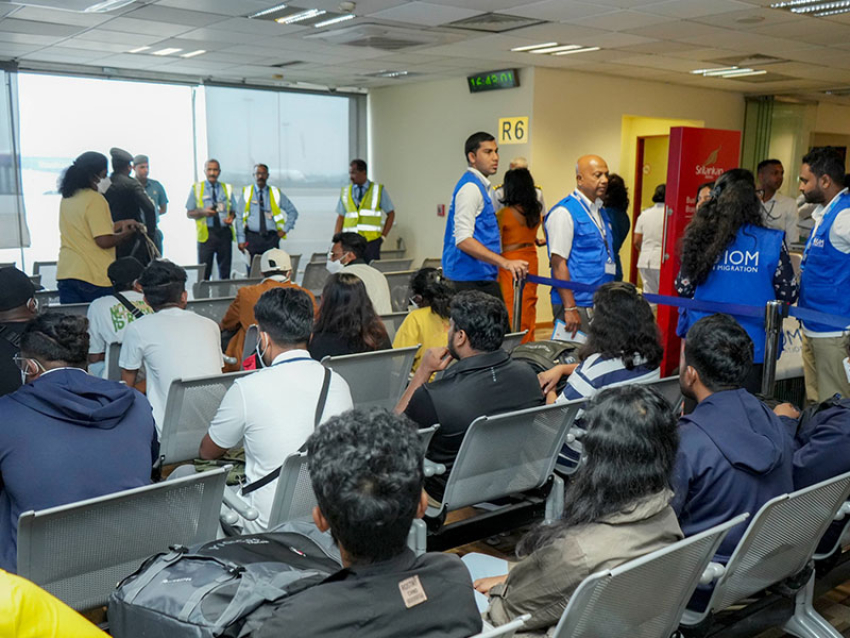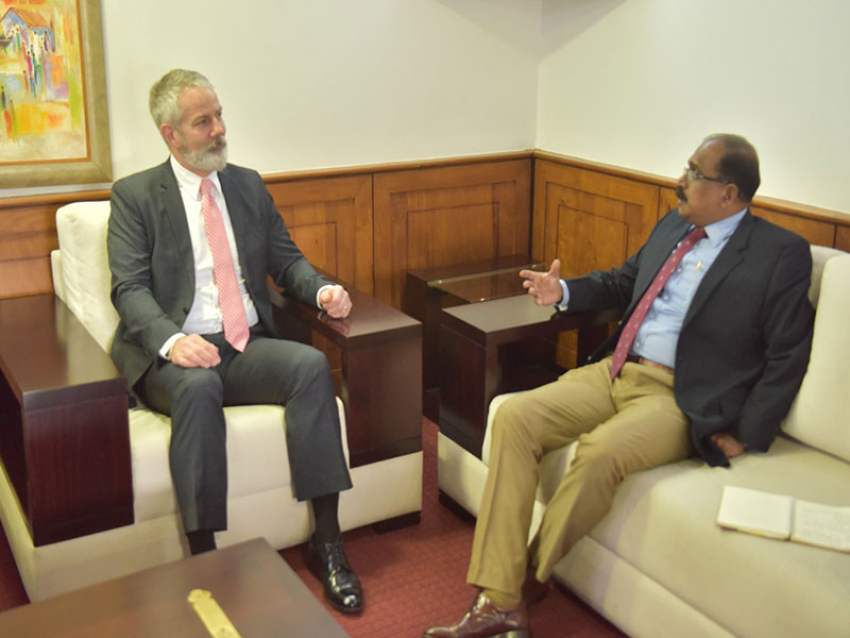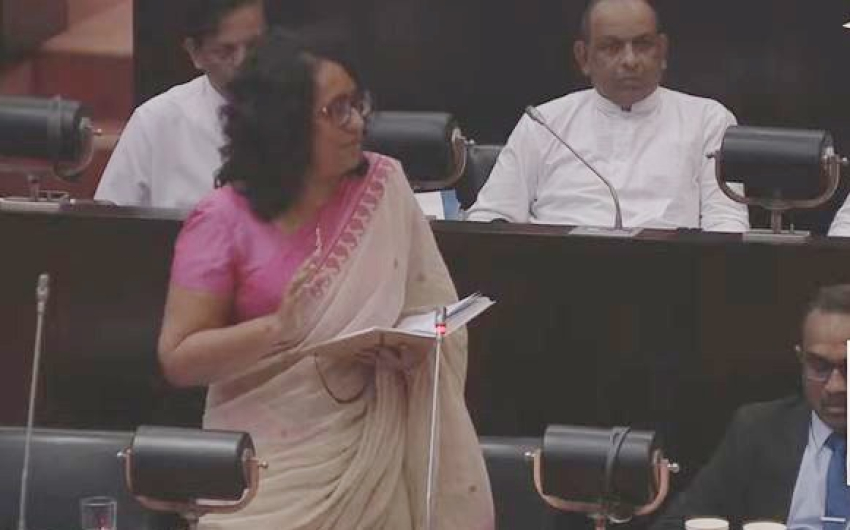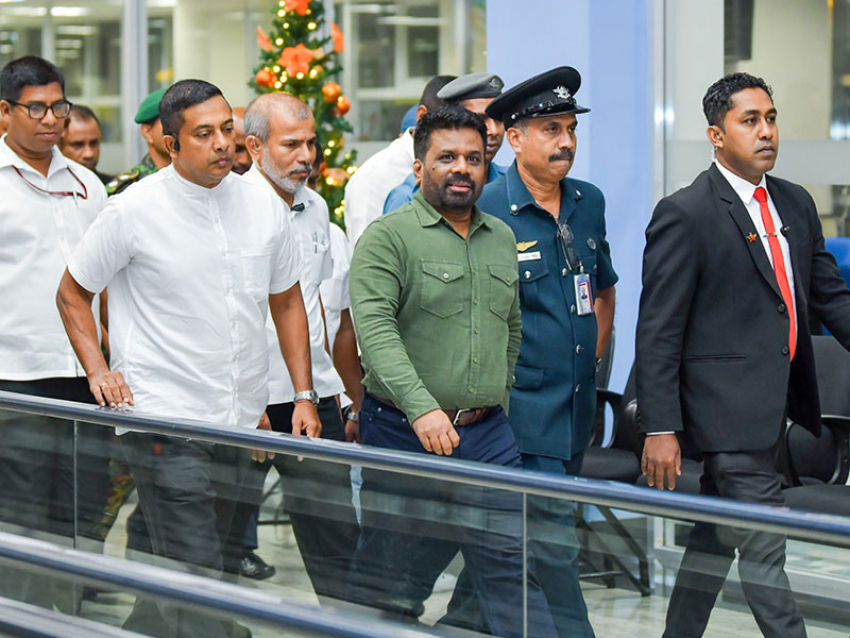India's Prime Minister Narendra Modi hailed the mission as "an important step in the landmark journey".K Sivan, head of Isro, said he was confident Chandrayaan-2 would land on the Moon as planned on 7 September."Whatever is humanly possible, has been done by us," he told reporters at a news conference.
Today (August 20, 2019) after the Lunar Orbit Insertion (LOI), #Chandrayaan2 is now in Lunar orbit. Lander Vikram will soft land on Moon on September 7, 2019
Chandrayaan-2 was launched from the Sriharikota space station on 22 July, a week after the scheduled blast-off was halted due to a technical snag.India hopes the $145m (£116m) mission will be the first to land on the Moon's south pole. Last month's launch was the beginning of a 384,000km (239,000-mile) journey.
'Our hearts almost stopped'Mr Sivan said Chandrayaan-2's successful entry into the Moon's orbit was a make-or-break moment for the mission.The craft, which comprises three parts - an orbiter, a lander and a rover - used an on-board propulsion system to complete the tricky operation.Sivan said the speed and altitude of the craft had to be "just right" because "even a small error would have killed the mission"."Our heartbeats increased... for 30 minutes, our hearts almost stopped," Mr Sivan said.
Now Chandrayaan-2 has entered the Moon's orbit, it will carry out a series of manoeuvres in the coming days before its lander attempts to touch down next month.What is this mission all about?India's first lunar mission, Chandrayaan-1, was launched in 2008 but it did not land on the lunar surface. However it carried out the first and most detailed search for water on the Moon using radars.Nasa confirms ocean moon missionChandrayaan-2 (Moon vehicle 2) will try to land near the little-explored south pole of the Moon.The mission will focus on the lunar surface, searching for water and minerals and measuring moonquakes, among other things.
India used its most powerful rocket, the Geosynchronous Satellite Launch Vehicle Mark III (GSLV Mk-III), in this mission. It weighed 640 tonnes (almost 1.5 times the weight of a fully-loaded 747 jumbo jet) and, at 44 metres (144ft), was as high as a 14-storey building.
The lander (named Vikram, after the founder of Isro) weighs about half as much, and carries within its belly a 27kg Moon rover with instruments to analyse the lunar soil. In its 14-day life, the rover (called Pragyan - wisdom in Sanskrit) can travel up to a half a kilometre from the lander and will send data and images back to Earth for analysis.
The journey of more than six weeks is a lot longer than the four days the Apollo 11 mission 50 years ago took to land humans on the lunar surface for the first time.
In order to save fuel, India's space agency has chosen a circuitous route to take advantage of the Earth's gravity, which will help slingshot the satellite towards the Moon. India does not have a rocket powerful enough to hurl Chandrayaan-2 on a direct path. In comparison, the Saturn V rocket used by the Apollo programme remains the largest and most powerful rocket ever built.
Nasa confirms ocean moon mission
Europa Clipper will try to determine whether the moon can support biology
Scientists working on an audacious mission to the ocean world of Europa can proceed with the final design and construction of the spacecraft, Nasa says.The Europa Clipper mission will target the ice-encrusted moon of Jupiter, which is considered a prime target in the search for life beyond Earth.Below its icy shell, Europa is thought to hold a 170km-deep body of water.This could have the right conditions for biology.
Due to launch in 2025, the Europa Clipper mission has now passed a stage called Key Decision Point C, a crucial marker on the road to the launch pad."We are all excited about the decision that moves the Europa Clipper mission one key step closer to unlocking the mysteries of this ocean world," said Thomas Zurbuchen, associate administrator for Nasa's science mission directorate.
Gravitational interactions with Jupiter generate tidal forces and heat, which keeps Europa's ocean liquid. The heating may even drive volcanic vents on the seafloor; on Earth, such vent systems support a wide array of life forms.
But it has taken decades to bring a dedicated mission this far, in part because of cost considerations and the challenges posed by the space environment around Jupiter.
Europa's orbital path takes it deep into belts of intense radiation that surround the giant planet. This radiation fries spacecraft electronics, which limits the durations of prospective missions to months or even weeks.
So rather than orbiting Europa, Clipper will make repeated close flybys of the moon, to reduce its exposure to the energetic particles trapped by Jupiter's magnetic field.The spacecraft will carry nine science instruments, including cameras and spectrometers to produce high-resolution images of the moon's surface, a magnetometer to measure the strength and direction of its magnetic field (providing clues to the ocean's depth and salinity) and an ice-penetrating radar to determine the thickness of the icy crust above the ocean.
The ice shell could be tens of kilometres thick. Luckily, scientists think there are several ways for ocean water to get up to Europa's surface. In recent years, the Hubble Space Telescope has made tentative observations of plumes of water-ice erupting from beneath Europa, much as they do on Saturn's ice moon Enceladus, which also has a subsurface ocean.
The first concepts for missions to explore Europa were drawn up in the 1990s, around the time that data from the Galileo spacecraft helped build evidence for a subsurface ocean. Since then, however, one proposal after another has been thwarted, including an ambitious US-European mission along the lines of the Cassini-Huygens mission.
But Clipper has had a key champion on Capitol Hill, in the form of Republican legislator John Culberson who, as chairman of the US House of Representatives appropriations committee that funds Nasa, channelled money to the mission.
But last year, Culberson, who had become known for his advocacy on Europa exploration, was unseated in Texas' 7th congressional district by Democrat Lizzie Pannill Fletcher. During the campaign, a pro-Democrat political action committee ran an ad saying: "For Houston, Lizzie Fletcher will invest in humans, not aliens."A follow-up mission to go and land on Europa has also been proposed. But the most recent federal budget request included no funding for the lander.
The women scientists who took India into space
12 December 2016
Share this with Facebook Share this with Messenger Share this with Twitter Share this with Email Share
Image copyrightASIF SAUD
Image caption
India's 'space women' (from left) Ritu Karidhal, Anuradha TK and Nandini Harinath
Two years ago, as Indian scientists successfully put a satellite into orbit around Mars, a photograph that went viral showed women dressed in gorgeous saris with flowers in their hair celebrating at the Indian Space Research Organisation (Isro) in the southern city of Bangalore.
It was reported that the ecstatic women were scientists and the photograph challenged the stereotype that rocket science in India was a male preserve.
Isro later clarified that the celebrating women were administrative staff, but it went on to add that there indeed were several women scientists who had worked on the mission and were in the control room at the time of the launch.
The BBC's Geeta Pandey recently travelled to Bangalore to meet some of the women who have taken India into space.
As a little girl growing up in the northern Indian city of Lucknow, Ms Karidhal was an avid sky watcher who "used to wonder about the size of the moon, why it increases and decreases. I wanted to know what lay behind the dark spaces".
A student of science who loved physics and maths, she scoured the daily newspapers for information about Nasa and Isro projects, collected news clippings, and read every little detail about anything related to space science.
After getting her postgraduate degree, "I applied for a job at Isro and that's how I became a space scientist", she says.
It's now been 18 years and Ms Karidhal has worked on several projects at Isro, including the prestigious Mars mission, which has thrust her and her colleagues into the limelight.
Image copyrightAFP
Image caption
This photograph of Isro administration staff celebrating the Mars mission went viral
The mission began in April 2012 and the scientists only had 18 months to capture Mars.
"It was a very small window, so the big challenge was to realise the project in that time. We had no heritage of interplanetary missions, so we had a lot to do in that short period."
Why is Bangalore stuck in traffic jams?
Why India's Mars mission is so cheap - and thrilling
Did Clinton win more votes than any white man in history?
Although women scientists were part of the mission right from the time of conception, Ms Karidhal says its success was due to the team effort.
"We used to sit with the engineers, everyone would brainstorm, irrespective of the time, we often worked the weekends.
A mother of two young children, Ms Karidhal says it was not easy to maintain a work-life balance but "I got the support I needed from my family, my husband and my siblings".
Image copyrightAFP
Image caption
The Mars mission was India's first interplanetary mission
"At the time, my son was 11 and my daughter was five. We had to multi-task, manage time better, but I think that even when I was exhausted at work, I'd go home and see my children and spend time enjoying with them, and I'd feel better and they would also like it."
It's often said that "men are from Mars while women are from Venus" but following the success of the Mars mission, many dubbed India's women scientists the "women from Mars".
"I am a woman from earth, an Indian woman who got an amazing opportunity," Ms Karidhal says.
"Mars mission was an achievement, but we need to do a lot more. The country needs a lot more from us so that the benefit reaches the last man."
And who better than women scientists to do that?
Nandini Harinath, Deputy Operations Director, Mars Orbiter Mission
Image copyrightASIF SAUD
Ms Harinath's first exposure to science was Star Trek on television.
"My mother is a maths teacher and my father is an engineer with a great liking for physics and as a family we were all so fond of Star Trek and science fiction and we would sit together and watch it on TV."
Of course, at the time, she never thought of becoming a space scientist and for her, Isro "just happened".
"It was the first job I applied for and I got through. It's been 20 years now and there's been no looking back."
Being part of the Mars mission was a high point of her life.
"It was very important for India, not just for Isro. It's put us on a different pedestal, foreign countries are looking at us for collaborations and the importance and attention we got was justified.
Image copyrightAFP
Image caption
"The government recognised the mission, and there's no bigger honour than that"
"It was also the first time Isro allowed the public to look at what was happening inside, we were on social media, we had our own Facebook page, and the world took notice.
"I feel proud of our achievement. Sometimes, I feel honoured and flattered, but sometimes I'm also embarrassed," she says, laughing. "But now the way people look at you, it's very different. People recognise you for being a scientist. And I'm enjoying it thoroughly."
Ms Harinath says she takes "immense pride" in Mangalyan and was "really thrilled" to see it's photograph on the new 2,000 rupee notes.
But it was not an easy assignment and the work days were long.
In the beginning, the scientists worked about 10 hours a day, but as the launch date came closer, it went up to 12 to 14 hours.
Image copyrightAFP
Image caption
The scientists on the Mars mission worked long hours to meet their deadlines
"During the launch, I don't think we went home at all. We'd come in the morning, spend the day and night, probably go home for a short time the next afternoon to eat and sleep for a few hours and come back. But for an important mission like that which is time bound, we needed to work like that.
"We spent many sleepless nights. We encountered lots of problems as we progressed, in the design as well as in the mission. But it was coming up with quick solutions, innovation that was brought in that was key."
To make matters worse, her daughter's crucial school leaving exams fell right in the middle of the mission.
"Those few months were very demanding at work and at home. It looked like a race at the time. I'd wake up at 4am with my daughter to give her company while she studied. But now, we look back on that time with fondness. She did extremely well in her exams, scoring 100 in maths. Today, she's in medical school and is doing really well so I think it was all worth the effort."
I ask if we can call her the "woman from Mars".
"I want to be grounded to earth. It's important to remain so, to bring out the best in a person," she says.
"The Mars mission was a huge achievement, but that's past now. We need to look into the future, to see what more we can do. We have the entire cosmic neighbourhood waiting to be explored. There are so many planets, so it's time to venture out."
Anuradha TK, Geosat Programme Director at Isro Satellite Centre
Image copyrightASIF SAUD
For this senior-most woman officer at Isro, the sky is the limit - she specialises in sending communication satellites into space that sit at least 36,000km from the earth's centre.
The scientist who has worked with Isro for the past 34 years first thought about space when she was nine.
"It was the Apollo launch, when Neil Armstrong landed on the moon. We had no television in those days, so I heard about it from my parents and teachers. It really ignited the imagination. I wrote a poem on a man landing on the moon in Kannada, my native language."
Considered a role model by other women scientists at Isro, Ms Anuradha disagrees that women and science don't gel.
"I never liked subjects where I needed to remember a lot and science looked logical to me. I don't believe that Indian girls think science is not meant for them and I think maths is their favourite subject."
Image copyrightAFP
Image caption
Ms Anuradha believes that there is nothing holding girls back from science
When she joined Isro in 1982, there were only a few women and even fewer in its engineering department.
"In my batch, five-six women engineers joined Isro. We stood out and everyone knew us. Today, more than 20-25% of Isro's over 16,000 employees are women and we no longer feel special," she laughs.
At Isro, she says, gender is not an issue and the recruitment and promotional policies are all dependent on "what we know and what we contribute".
"Sometimes I say that I forget that I'm a woman here. You don't get any special treatment because you're a woman, you're also not discriminated against because you're a woman. You're treated as an equal here."
She laughs at the suggestion that her colleagues consider her an inspiration, but agrees that having more women in workplace can be a motivating factor for other women.
"Once girls see that there are lots of women in the space programme, they also get motivated, they think if she can do it, so can they."
Image copyrightAFP
Image caption
The Mars mission has been an enormous source of national pride in India
Although the numbers of women staff has been consistently growing at Isro, it is still way below the halfway mark.
That's because "we are still carrying cultural loads on our backs and many women think their priorities lie elsewhere, at home", she says.
Her advice to women who want to be rocket scientists is simple: "make arrangements".
"Once I had made up my mind that I needed a purposeful career where my passion lay, I created a good set up at home. My husband and my parents-in-law were always cooperative, so I didn't have to worry much about my children.
"And I owe my success to the arrangements I made. You have to give something to get something. But life is like that. So when there was work to do, when I was needed at the office, I was here, working with passion. And when there was an absolute need for me to be at home, I was there."
Geeta Pandey recently spent ten days working on a series of stories in Bangalore. This is her second report.




















